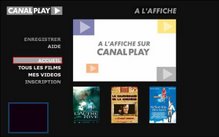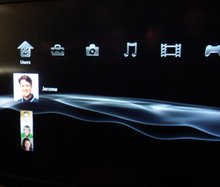CoreCodec is known for its CorePlayer, which supports “multimedia content on your desktop, mobile phone, portable media player, PDA, GPS, or convergence device”. It is widely used in the cell phone industry. Now, CoreCodec are in the process of retargeting their new Lua run-time environment to customers’ TV system-on a chip (Soc). They have already provided Lua run-time support for BroadQ’s Sony Playstation 2 project. Lua has particularly light-weight support requirements, and is popular in the video game industry.
Adobe’s Flash is widely used in the PC industry, when building web interface applications. Its availability for TV UI development would be greatly appreciated; given its productivity, capability and familiarity. The new CE3100 TV SOC from Intel has an advantage when supporting Flash due to the CE3100’s X86 processor core. Other, possibly lower cost TV SoC, will have a harder time supporting Flash. Using Lua may be the answer to competing with the CE3100.
Below is a TV screen image of the current Lua-based YouTube interface.
Daniel Mann













